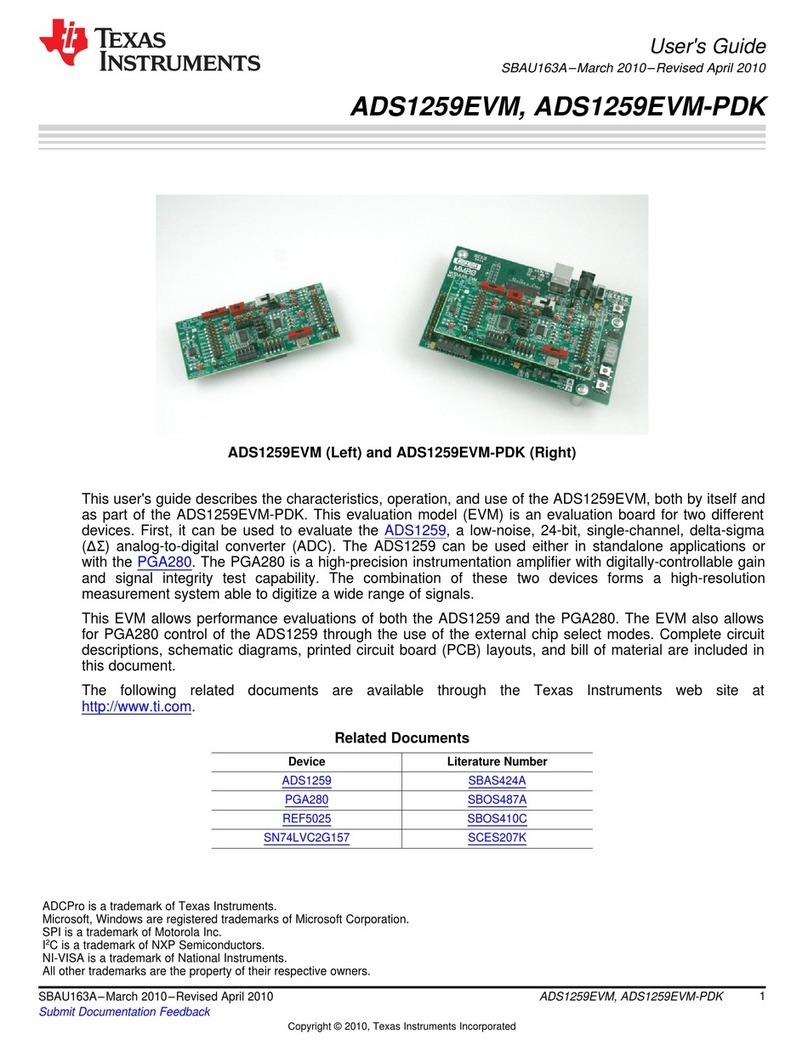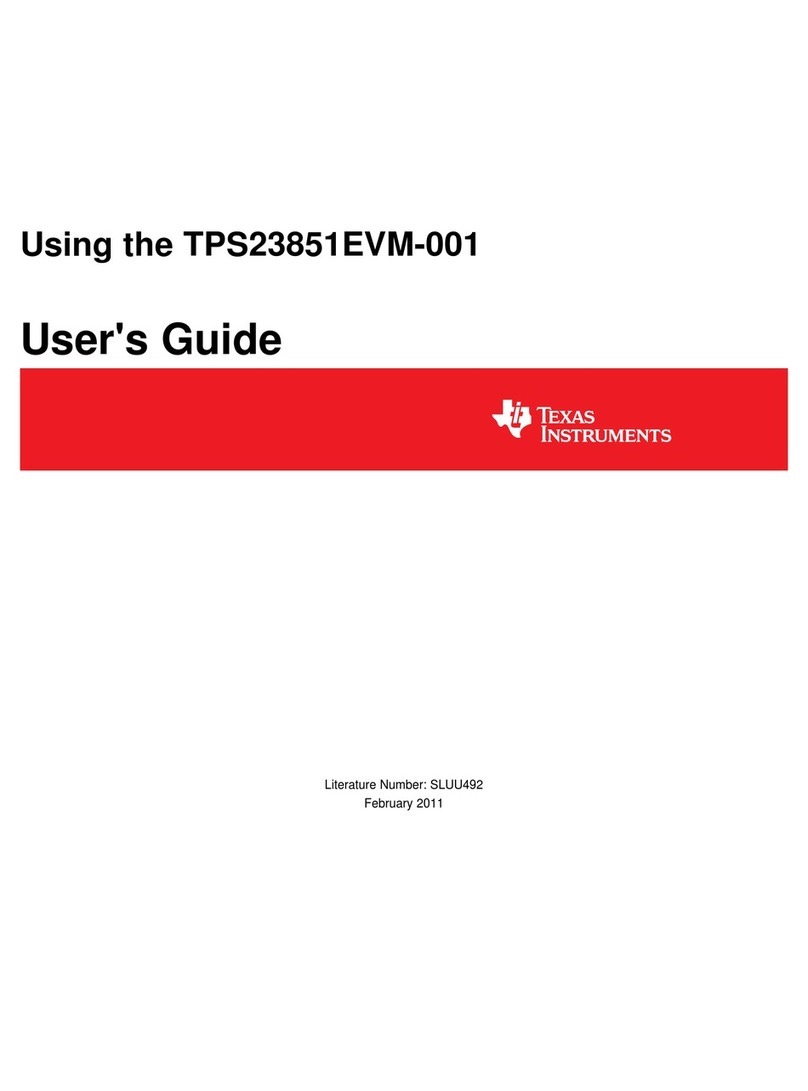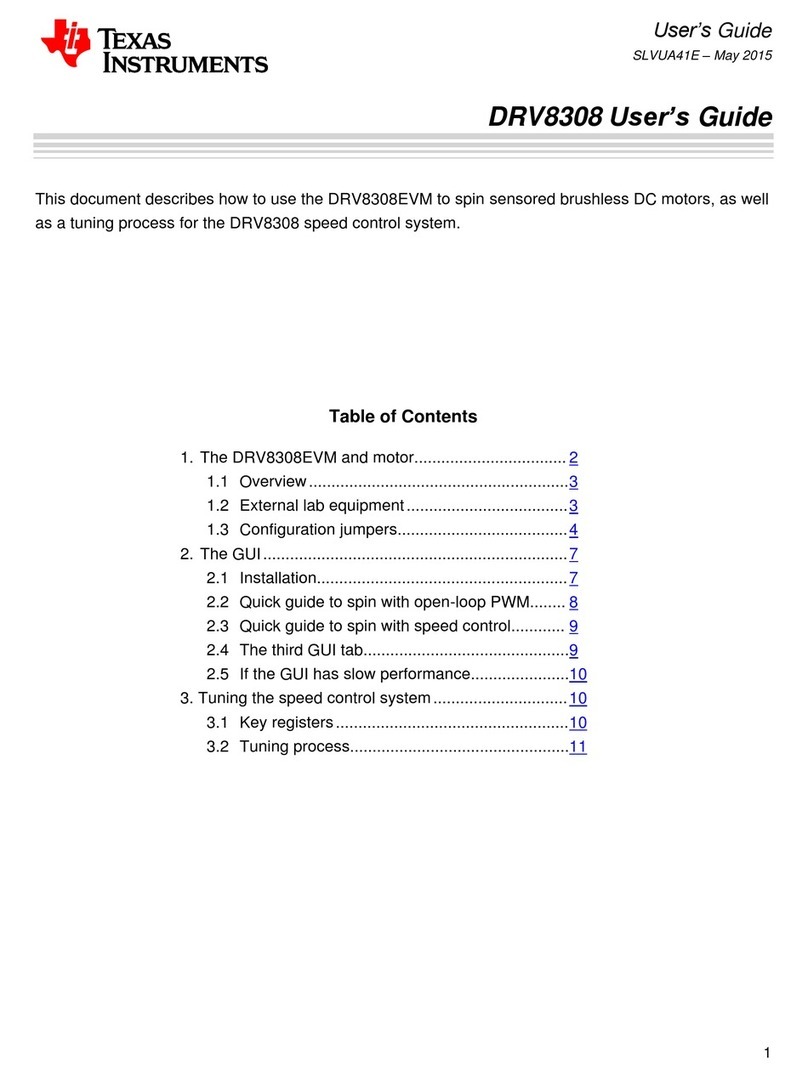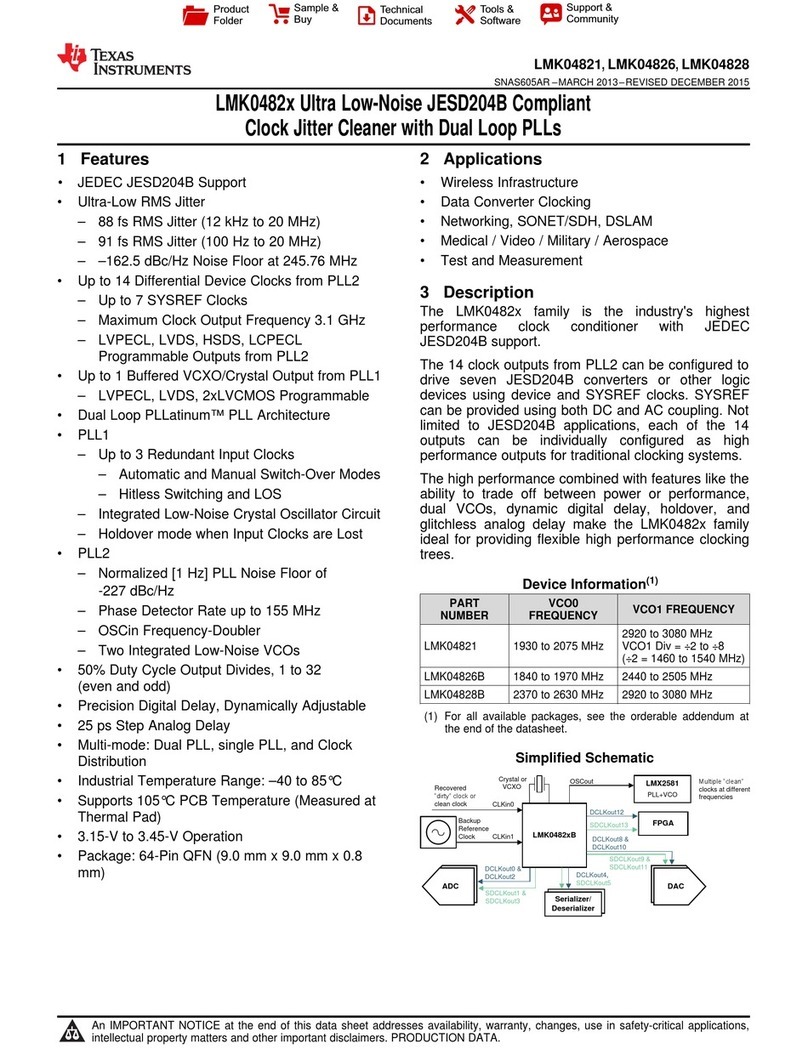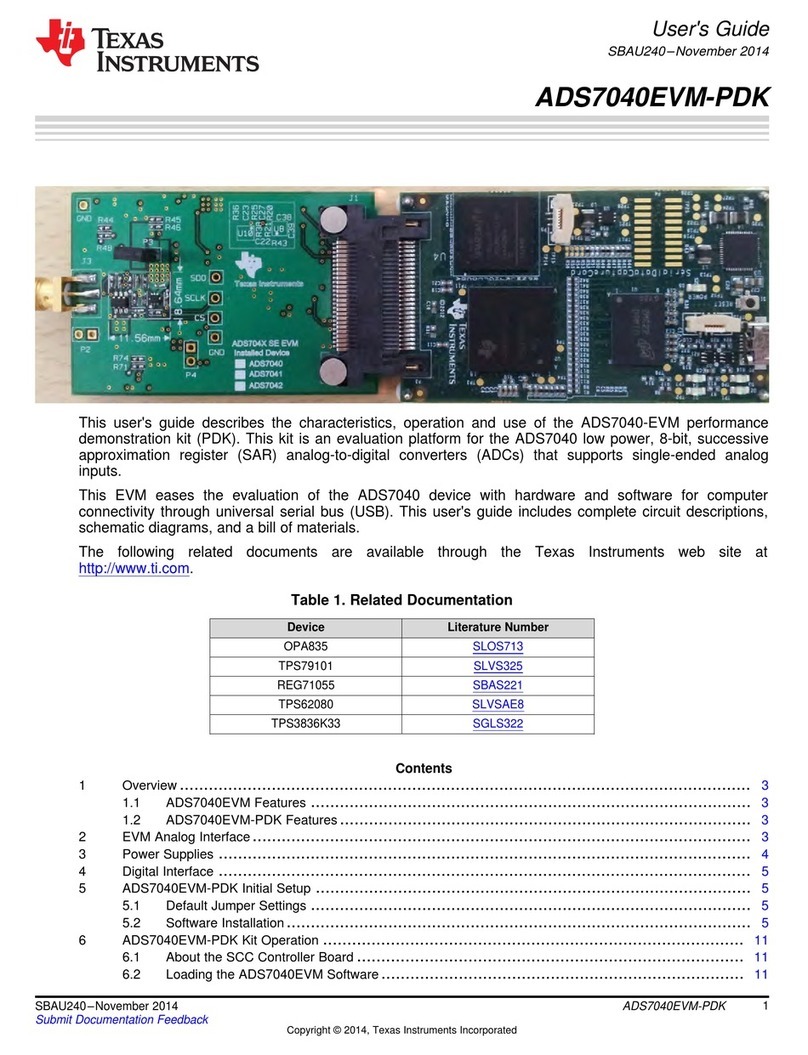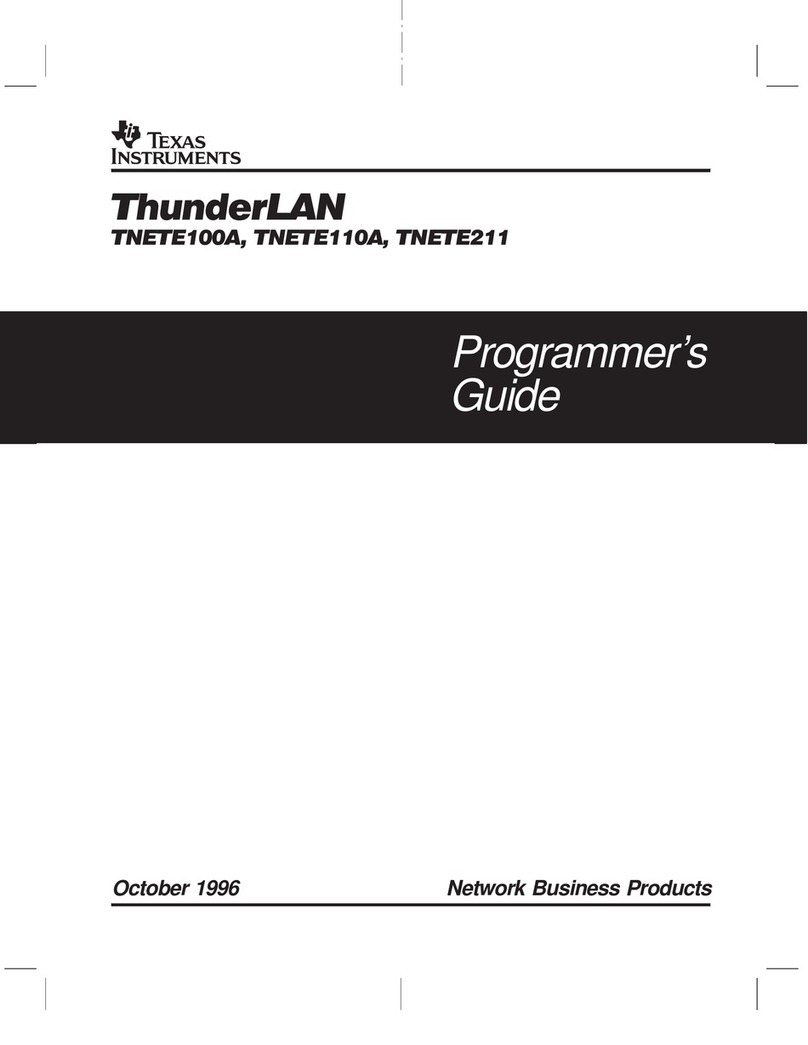
www.ti.com
Functional Block Diagram
5
SPRUIH9–August 2018
Submit Documentation Feedback Copyright © 2018, Texas Instruments Incorporated
AM335x Starter Kit Hardware
3.3 Reset Signals
Power On Reset to the AM335x is driven by the PMIC. SYS_ WARMRESETn is a signal running to
several peripherals and AM335x which performs a reset on those peripherals. SYS_WARMRESETn is
asserted by a pushbutton on the main board and is used to force a reset of the AM335x. AM335x can also
pull down on the RESET_INOUTn signal to cause the SYS_ WARMRESETn line to go active. The
RTC_PORZ reset signal for the RTC section is derived using AND Gates.
3.4 Power
The power input to TMDSSK3358 is from a 5V Power Supply. This 5 V power is provided as power input
to the Power Manager TPS65910A3. The power requirements of the processor are taken care of by the
Power Manager IC TPS65910A3. The Power ON LED "D5" is ON if the PMIC output power VAUX33 is
available (to indicate the active status of the PMIC). The power sequencing requirements of the AM335X
processor are handled automatically by the TPS65910A3 PMIC. For more information, see AM335x
Sitara™ Processors Data Sheet.
NOTE: When powering the TMDSSK3358 EVM, always use the supplied power supply (CUI/V-
Infinity Part Number EMSA050300-P6P-SZ, Model 3A-182WP05) or equivalent model having
output voltage of +5VDC and output current max 3.0 Amps. A power supply is not included
with the kit.
3.5 Power Management IC
TMDSSK3358 uses the TPS65910A3 power management IC. The I2C0 on AM335x is used to control the
TPS65910A PMIC.
The PWRON input of PMIC is connected to an external push-button. The built-in debouncing time defines
a minimum button press duration that is required for button press detection. Any button press duration
which is lower than this value is ignored, considered an accidental touch.
For AM335x, the following power supplies from the TPS65910A are used.
Table 1. Power Supplies to AM335x From TPS65910A3 PMIC
TPS65910 Power Supply/Other Sources AM335x Power Rail Volta
ge
VAUX2 (300 mA) VDDSHV6 (300mA) 3.3 V
VMMC (300 mA) VDDSHV2,3,4,5 (300 mA), VDDA3P3V_USB0/1 (10 mA) 3.3 V
VDD2 SMPS (1500 mA) VDD_CORE (1000 mA) 1.1 V
VDD1 SMPS (1500 mA) VDD_MPU (1500 mA) 1.2 V
No supply needed VDD_RTC 1.1 V
VRTC (External LDO) VDDS_RTC (10 mA) 1.8 V
VIO_SMPS (1000 mA) VDDS_DDR (200 mA) 1.5 V
VIO_SMPS (1000 mA) DDR_VREF (10 mA) 0.9 V
VDAC (150 mA) VDDS (100mA) 1.8 V
VDIG1 (300 mA) VDDSHV1 1.8 V
VDIG2 (300 mA) VDDS_SRAM_CORE_BG (40 mA) 1.8 V
VDIG2 (300 mA) VDDS_SRAM_MPU_BB (40 mA) 1.8 V
VDIG2 (300 mA) VDDS_PLL_DDR (25 mA) 1.8 V
VDIG2 (300 mA) VDDS_PLL_CORE_LCD (25 mA) 1.8 V
VDIG2 (300 mA) VDDS_PLL_MPU (25 mA) 1.8 V
VDIG2 (300 mA) VDDS_OSC (10 mA) 1.8 V
VAUX1 (300 mA) VDDA1P8V_USB0/1 (50 mA) 1.8 V
VPLL (50 mA) VDDA_ADC 1.8 V
VDD3 SMPS (100 mA) Not Used -
